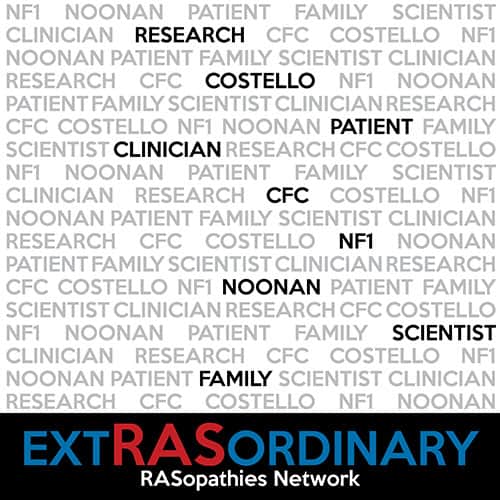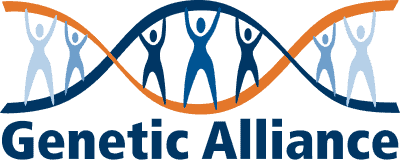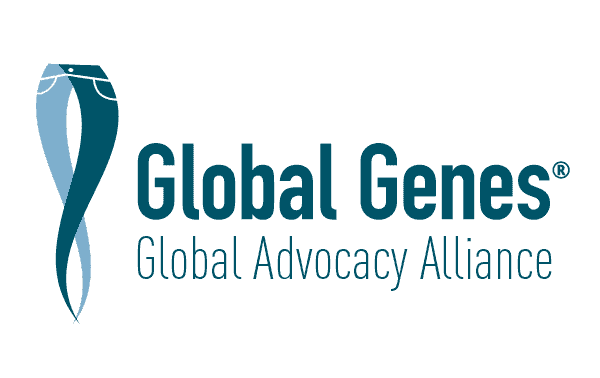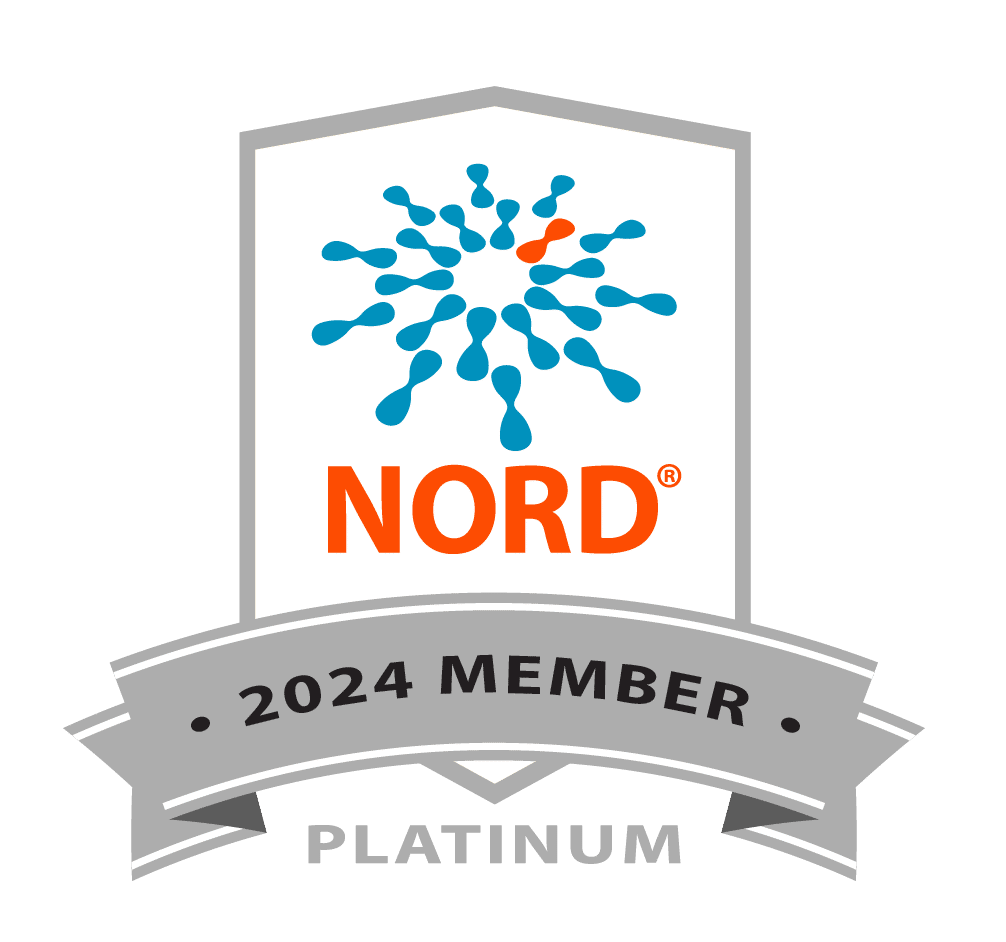Welcome to the EXTRASORDINARY Interview Series
This blog is a place to introduce you to extraordinary RASopathies patients, families, scientists, researchers, and clinicians! Be sure to scroll through to the bottom to read past entries.
August 1, 2018 – Researcher and Co-Author of “Anna’s Big Week,” A children’s story about living with Noonan syndrome, Rene Pierpont, PhD, LP
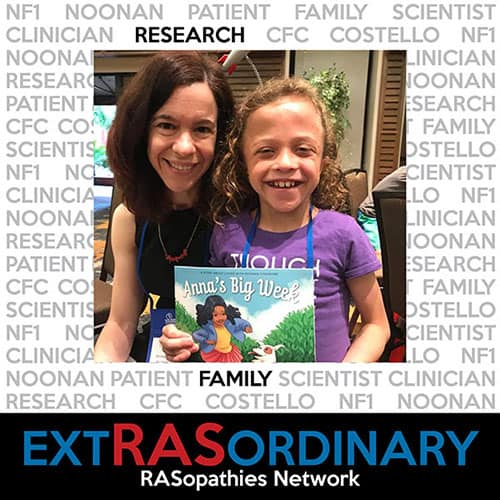
Pictured: Rene Pierpont with Campbell White
What is your education history?
I obtained my Bachelor’s degree at Georgetown University and then my Ph.D. in psychology at the University of Wisconsin-Madison. During my post-doctoral training I re-specialized in clinical psychology. I completed a clinical internship and a neuropsychology fellowship at the University of Minnesota. A few years ago, with my long educational path completed, I stayed in Minnesota and joined faculty in the medical school. Now I have the honor of helping to train the next generation of neuropsychologists!
How did you become a researcher?
Ever since I was young, I have been very curious to learn about how the brain works. In college, I especially became interested in children who have language problems, and in understanding how brain development might be different for these children. This led me to study about how different genetic and environmental variables play a role in how a child develops. Since college, there has not been a time when I wasn’t involved in research projects! Researching is a big part of what I do because I want to know more about my patients and how I can serve them better.
What, as a researcher/doctor, interests you about rare disease?
When working with children with rare disease, you need to be both more creative and more methodical in order to figure out what is going on. When you don’t have a lot of patients to study, you learn to listen to each patient very attentively!
How has researching RASopathies impacted and/or changed your approach to research or clinical treatment?
One thing that becomes obvious when you research RASopathies is that, even though there is a common biological component that connects all of these different “syndromes,” there is a huge amount of variation from person to person in how they are impacted by their genetic change. This variability from one person to the next has helped me be vigilant about the huge number of factors that can influence how people learn and behave. For example, I am now able to recognize how things like birth complications, access to medical care, educational support, nutrition, sleep, medications, family dynamics, social experiences, and so much more contributes to each child’s functioning and their well-being. It has helped me build a more holistic perspective in my practice of neuropsychology.
Have you personally connected with families? How and why is the personal connection significant for you?
Yes, the personal connection with families is a huge reason why I want to keep studying rare disease. When I continue to share meals and conversations with the same people at conferences over a span of several years, and can see how having a RASopathy impacts them at different stages of their life, it motivates me to keep doing the research. Meeting new children and families is also energizing and motivating. I feel like I am a part of the community.
Can you share a bit about your motivation for writing a book about a girl with Noonan syndrome?
When we embarked on this book project, my coauthor Saakshi and I were initially interested in making information about Noonan syndrome more accessible to children, and in communicating some of the science and the medical knowledge about the condition in a relatable way. We also wanted the book to be helpful for families who might be discussing Noonan syndrome with their child for the first time. As we were writing this book, we asked for a lot of feedback from families who had a child with Noonan syndrome and also from some of the doctors who treat patients with Noonan syndrome. We wanted the book to reflect some of their everyday reality. Bits and pieces of the main character Anna reflect the stories and ideas that we heard over those conversations.
As the project evolved, and we started working with the illustrator, my own motivation shifted a bit. I realized that another key reason I was working on this book is that I wanted children with Noonan syndrome to know that they are tremendously interesting and important and worth writing about. When reading books and watching shows with my own children, I’ve repeatedly had the feeling that the media needs to do a better job of representing the diversity that surrounds us in our world. I think that’s especially true when it comes to people with medical and developmental conditions. In 2018, it is still rare to see a character with a chronic disease or a genetic difference that is front and center in a book just living their life and doing cool things. I wanted to play a part in changing that.
Whom, professionally, do you admire? Personally?
Both personally and professionally I have great admiration for my mother, Dr. Mary Ella Pierpont. She is a geneticist who has provided care to children with RASopathies since before I was born. She does her job with a lot of integrity and always tries to provide excellent care to her patients. On top of that, she’s a wonderful grandmother. My kids adore her.
How do you spend your free time?
Outside of work, most of my time is spent with my family. I have a 6-year old and a 3-year old at home. They keep me busy. We take walks or hike outside, we attend my daughter’s Scottish dancing classes, and we play trains with my vehicle-obsessed son.
What is your favorite food?
Italian food! I love manicotti. Yum. And eggplant Parmesan. And calamari. I also like Indian food. Oh, and chocolate chip cookies. Can you tell that I like to eat?
May 1, 2018 – 2017 Million Dollar Bike Ride Grant Awardee: Kartik Venkatachalam, Ph.D. Associate Professor McGovern Medical School part of UTHealth | The University of Texas Health Science Center at Houston
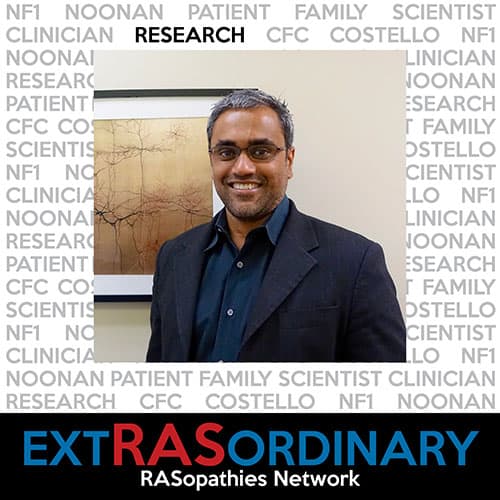
What is your education history?
I got my Bachelors degree, which was in Biochemistry, from Delhi University in India. Subsequently, I moved to the US and performed my doctoral studies at the University of Maryland, School of Medicine, Baltimore. During this time, I worked on the regulation of a group of proteins that allow cells to handle calcium ions. After finishing my PhD in 2002, I moved across town to do a postdoctoral fellowship at the Johns Hopkins University. During this time, I started working with flies with a special emphasis on the development of the nervous system. After completing my fellowship at Hopkins in 2008, I remained there for two more years as a non-tenure track faculty member. In 2010, I joined University of Texas as faculty member on the tenure track.
How did you become a researcher?
Ever since childhood, I was interested in science. I could not imagine doing anything else. Becoming a researcher was natural. However, my love affair with research began in earnest when I started working on the PhD.
Why RASopathies?
The chair of my department here at UT, Dr. John Hancock, is a pioneer in Ras signaling, especially in the context of cancer. Consequently, he has built a department with many researchers that have peripheral interests in this field. When I came to Houston, I started combining my research background, which was in the endolysosomal biology with Ras signaling. Consequently, we found that manipulating the function of some endolysosomal proteins can very effectively mitigate signaling disturbances that have been pushed into overdrive in Rasopathies. Given the availability of drugs to target these pathways, we are asking whether these drugs could be suitable for patients suffering from Rasopathies.
What, as a researcher/doctor, interests you about rare disease?
From a purely research perspective, I feel that the insights gleaned from studying the pathophysiology of rare diseases are very informative regarding general biology. But even more significant are the close interactions with families and patient advocacy groups and the opportunity to make a real difference in the lives of patients and their families. Being able to put names and faces to the humans suffering from the diseases in an incredible motivator when research projects get complicated!
How has researching RASopathies impacted and/or changed your approach to research or clinical treatment?
Although my lab is relatively new to Rasopathies per se, we are already beginning to see real changes to our research agenda. For one, this grant from the foundation via Penn has allowed me to hire an outstanding postdoctoral fellow, Dr. Jewon Jung, who is working tirelessly on the project. Also, we are now trying to develop long-term projects along on understanding Ras biology in the context of both Rasopathies and cancer.
Have you personally connected with families? How and why is the personal connection significant for you?
I have been in touch a few family members, especially the mother of a child with Noonan syndrome. She informed us about a drug that could be of benefit in Rasopathies. It was upon her urging that Jewon tried this drug on our animal and cell models, and found a remarkable suppression of toxic signaling. We are now intensely focused on identifying the underlying mechanism. This line of inquiry would not have been possible without the input from this mother. I also look forward to building a long-term relationship with the families. I am sure there is a lot my lab can learn from the people who are caring for the children with Rasopathies on a daily basis!
Can you share a bit about your current research, specifically what the Rasopathies grant is funding.
As I mentioned above, my lab has been focused on trying to understand the biology of a cellular compartment referred to as endolysosomes, which are tiny vesicles (sacs) in cells that are responsible for breaking down and recycling cellular waste products. Over the course of the last few years, my lab has identified proteins that function in endolysosomes as being critical for the toxicity seen in Rasopathies. The idea is that cells with elevated Ras signaling become dependent on the function of these endolysosomal proteins such that inhibiting these proteins will attenuate the unregulated signaling cascades triggered by Ras in these patients. We are currently testing this model using animals and cells expressing Rasopathies-related gene variants.
How do you spend your free time?
Due to a busy schedule at work, I really don’t get much free time. Whatever free time I have, I spend it with my wife and 9 year old son. If time permits, I try to sneak in a hour at the gym every couple of days.
March 14, 2018 – The Bailey Family
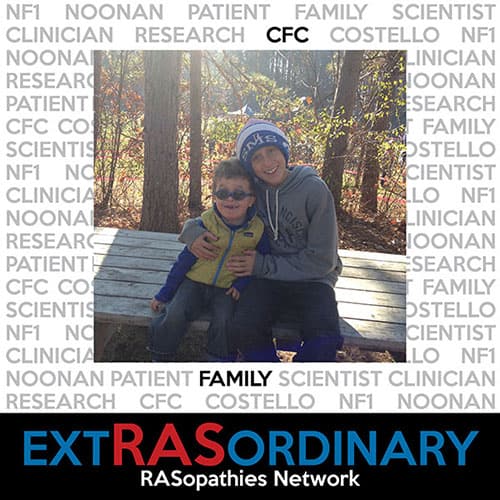
What is your name?
Fin Bailey
How old are you?
12
Where do you live?
Peru, VT
What are your favorite things to do?
Sports and hang out with my family
What’s your favorite food?
Tacos and ice cream
What do you want to be/do when you are older?
Something to do with sports
Who do you live with?
Mom, Dad, brother Shane, dog, Annie
Who in your family has one of the RASopathies?
My brother Shane
Which RASopathy does your sibling have?
CFC syndrome
What characteristics best describe your brother?
Shane is very funny, very structured, always happy and curious, loves to explore, super cute, and the most amazing brother ever.
What do you love most about your brother?
I love everything about him. I can’t pick just one thing.
What is the hardest thing about having a brother with a RASopathy?
Shane’s needs. It is really hard because his needs always come before mine. If Shane is sick, it sometimes seems like it is a lot bigger deal than when I am sick so that sometimes worries me. Most of the time I am okay with it but sometimes it a really hard.
What is the best thing about having a brother with a RASopathy?
Its different and its better. It’s a better “different”. Shane is always there for me. No matter what, he is always waiting to give me a hug or a kiss or just hang out with me. It is the best thing ever.
If you had a magic wand and could change something for your brother, what would it be?
I would make it so that he didn’t have any more surgeries and things would be easier for him. He is almost always happy and when he has to have surgery or be in the hospital, it is really sad to me. He is really strong though.
If you had a million dollars to give away, who or what would you give it to?
RASopathies Net for research to help make people’s lives better.
Do you have any advice for other siblings of RASopathy kids?
Be proud of your brother or sister with a disability. Instead think of it as you are more special because you have this sibling in your life.
What do you want people to know about your brother?
I want people to know everything – what he has and how hard life is for him sometimes. I want people to understand all about him because I don’t like when people look at him in a different way because he is just a person; just an awesome person.
What one word would you use to describe your brother?
Incredible.

